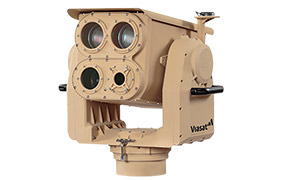Optical Storage Stacks the Deck
Bandwidth concerns are not the strict domain of telecommunications. As multimedia applications and services become more and more prevalent, entertainment and data storage companies are looking at ways to increase the amount of stored data and reduce the time it takes to get that data out of storage.
From Japan's Pacific Rim to the United States' west coast and into the heart of Europe, researchers are evaluating a number of inventive ways to store optical data while improving the performance and capacity of existing optical disk technology. While these approaches vary in materials and methods, they do share a common objective: expanded capacity through stacking layers of optical material.
Japan has been a moving force behind compact disk (CD) technology, newer recordable CD technology, and the creation of digital versatile disk (DVD). So it's not surprising these same companies are looking at ways to improve the optical disk while keeping the system's cost at levels most consumers can handle.
In his book, Physical Principles of Magneto Optical Recording Masud Mansuripur of the Univ. of Arizona (Tucson, AZ) outlines several new developments in optical disk recording approaches.
For audio recordings, Mansuripur describes a 150-MB minidisk with a 2.5-in. diameter that uses special compression to shrink a standard CD's 640-MB storage capacity onto the smaller polymer substrate. "It's rewritable and uses magnetic field modulation on optical (material)," Mansuripur said.
The minidisk uses one of two methods to write information onto an optical disk. With the minidisk, a magnetic field placed behind the optical disk is modulated while the intensity of the writing laser head is held constant. By switching the polarity of the magnetic field while the laser creates a state of flux in the optical material, digital data can be recorded on a single layer. As with all optical storage media, a read laser retrieves the data.
Along with minidisk developments, standard magneto-optical CD technology has expanded the capacity of the 3.5-in. diameter disk from 640-MB to commercially available 1-GB storage media. These conventional storage media modulate the laser instead of the magnetic field during the writing process. Fourth-generation 8X 5.25-in. diameter disks that use the same technology have reached capacities of 4-GB per disk. These disks are used mainly in "jukebox" devices, Mansuripur said. Not to be confused with the musical jukebox, these machines contain multiple disks for storage and backup of large amounts of data that need to be accessed quickly.
Beyond these existing systems are several laboratory systems that use multiple layers of optical material on a single disk. The one with the largest capacity, magnetic super-resolution (MSR), uses two layers of optical material. The data is written onto the bottom layer through a writing laser and magnetic field modulation (MFM). When reading the disk in MSR mode, the data is copied from the lower layer to the upper layer with greater spacing between bits. In this way, data can be stored much closer together (at distances smaller than the read beam wavelength) on the bottom layer without losing data due to averaging across bits. According to Mansuripur, this method is close to commercial production, offering capacities of up to 20 GB on a 5.25-in. disk without the need for altering conventional read-laser technology.
The U.S. manufacturer TeraStor (San Jose, CA) has proposed a single-layer, high-resolution storage system, which uses near-field recording (NFR). A solid immersion lens (SIL) surrounded by a magnetic coil produces significantly smaller bit sizes than conventional techniques. TeraStor offers these systems in 10- or 20-GB capacities from a single removable disk (Figure 1 a and b).


Advanced storage magnetic optics (ASMO) builds on MSR, but with one exception. Standard optical disks, including those used in MSR, have grooves and lands just like a phonograph record. These grooves are used as guideposts for the writing and reading lasers. However, standard systems only record data in the grooves, not on the lands, wasting a certain amount of the optical material's capacity.
ASMO records data on both lands and grooves and, by choosing groove depths approximately 1/6 the wavelength of the reading laser light, the system can eliminate the crosstrack crosstalk that would normally be the result of recording on both grooves and lands. According to Mansuripur, even conventional CD recordings pick up data from neighboring tracks, but this information is filtered out, reducing the signal-to-noise ratio. By closely controlling the groove depth, ASMO eliminates this problem while maximizing the signal-to-noise ratio.
MSR and ASMO technologies are expected to produce removable optical disk drives with capacities between 6 and 20 GB on a 12-cm optical disk, which is the same size as a standard CD that holds 640 MB.
While MSR and MFM techniques are being developed by a Japanese consortium and U.S. companies, the third and final optical disk improvement comes from the Hitachi Maxell Company. Magnetic amplifying magneto-optical systems (MAMMOS) uses a standard polymer disk with two or three magnetic layers. In general terms, MAMMOS is similar to MSR, except that when the data is copied from the bottom to the upper layer, it is expanded in size, amplifying the signal. According to Archie Smith of Storagetek's Advanced Technology Office (Louisville, CO), MAMMOS represents a two-fold increase in storage capacity over ASMO.
Technology developed by Call/Recall Inc. (San Diego, CA) could help bridge the gap between optical disk drives and holographic memories. Called 2-photon optical storage technology (which got its start with the assistance of the Air Force research laboratories and DARPA), the Call/Recall systems under development use a single beam to write the data in either optical disks with up to 120 layers, or into 100-layer cubes of active-molecule-doped MMA polymer.
In operation, a mask representing data is illuminated by a mode-locked Nd:YAG laser emitting at 1064 nm with pulse durations of 35 ps. The focal point of the beam intersects a second beam formed by the second harmonic of the same beam at 532 nm. The second beam fixes the data spatially and temporally. A third beam from a HeNe laser emitting at 543 nm reads the data by causing the material to fluoresce. The fluorescence is read by a charge-coupled device (CCD) chip and converted through proprietary algorithms back into data.
Newer versions of the system use a Ti:Sapphire laser with 200-fs pulses. Call/Recall's Fredrick McCormick said the newer and older approaches offer different strengths. The YAG system can deliver higher-power pulses capable of storing megabits of data with a single pulse, but at much lower repetition rates than the Ti:Sapphire laser with its lower-power pulses. "It's a trade off," McCormick said.
Call/Recall has demonstrated the system using portable apparatus comprised of a simple stepper-motor-driven stage and 200-microwatt HeNe laser in conjunction with a low-cost video camera. The company estimates that an optimized system could produce static bit error rates (BER) of less than 9 X 10-13. McCormick believes that a final prototype operating at standard CD rotation rates would offer BERs that match or slightly exceed conventional optical disk technology.
Researchers such as Demetri Psaltis and associates at the California Institute of Technology are also using active-molecule-doped polymers to store optical data holographically.
Their system uses a thin polymer layer of PMMA doped with phenanthrenequinone (PQ). When illuminated with two coherent beams, the subsequent interference pattern causes the PQ molecules to bond to the PMMA host matrix to a greater extent in brighter areas and to a lesser extent in areas where the intensity drops due to destructive interference. As a result, a pair of partially offsetting index gratings are formed in the PMMA matrix.
After writing the hologram into the polymer material, the substrate is baked, which causes the remaining unbonded PQ molecules to diffuse throughout the polymer, removing the offsetting grating and leaving the hologram. A uniform illumination is the final step, bonding the diffuse PQ throughout the matrix and fixing the hologram in the polymer material. Storagetek's Archie Smith estimates that devices based on this method could hold between 100 and 200 GB of data on a 5.25-in diameter polymer disk.
More conventional approaches to holographic storage use iron-doped lithium niobate crystals to store pages of data. Unlike standard magneto-optical storage devices, however, the systems developed by Pericles Mitkas at Colorado State University use the associative search capabilities of holographic memories (Figure 2). Associative or content-based data access enables the search of the entire memory space in parallel for the presence of a keyword or search argument. Conventional systems use memory addresses to track data and retrieve the data at that location when requested.

"Several applications can benefit from this mode of operation," Mitkas said, "including management of large multimedia databases, video indexing, image recognition, and data mining. Different types of data such as formatted and unformatted text, gray scale and binary images, video frames, alphanumeric data tables, and time signals can be interleaved in the same medium and we can search the memory with either data type."
The system uses a data and a reference beam to create a hologram on one plane inside the lithium niobate. By changing the angle of the reference beam, more data can be written into the cube just like pages in a book. "We've stored up to 1000 pages per spatial location with our current system in both VGA or VGA resolutions," Mitkas said.
To search the data, a binary or analog pattern that represents the search argument is loaded into a spatial light modulator and modulates a laser beam. The light diffracted by the holographic cube on a CCD generates a signal that indicates the pages that match the sought data.
"Precision depends, among other factors, on the size of the search argument as a percentage of the page," Mitkas said. "We have got good results with very small percentages." He added that recent results have shown the system can find the correct data 75 percent of the time when using patterns as small as 1 to 5 percent of the total page. That level goes up to 95 to 100 percent by increasing the amount of data included in the search argument.
Whether it's the strength of a truly parallel search in a holographic memory or incremental increases in layered optical disks, optical memory must still compete with the industry-standard magnetic memories that rule today's market for both large and small storage applications. For the past several years, the magnetic storage industry has lived under the fateful promise that thermal limits would eventually halt the development of magnetic memories. However, last year, magnetic memories doubled the storage capacity per area that was capable only the year before, according to StorageTek's Smith. And, over the past several years, magnetic memories have averaged a 60 percent increase in capacity per unit area.
TeraStor Corporation
2310 North First Street
San Jose, CA 95131
Phone: (1) 408/914-4000
Fax: (1) 408/914-4008
Call/Recall Inc.
6160 Lusk Blvd., Ste. C-206
San Diego, CA 92121
Phone: (1) 619/550-0596
www.call-recall.com
Storage Technology Corporation
One StorageTek Drive
Louisville, Colorado 80028 USA
Toll-free: (1) 800/786-7835
Phone: (1) 719/536-4055
Fax: (1) 719/536-4053
Hitachi Maxell, Ltd.
1-1-88, Ushitora
Ibaraki-shi, Osaka,
Japan 567
www.maxell.co.jp



